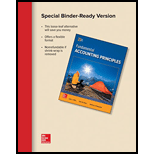
Introduction:
Horizontal Percentage Analysis
• Horizontal Percentage Analysis is a technique of performance measurement and evaluation where the performance of the current year is compared to that of a base year and the direction of the results are analyzed.
• The movement of the results can be interpreted as a positive or favorable Horizontal movement or as a negative or unfavorable Horizontal movement
• Favorable Horizontals mean increase in revenues and decrease in costs and are hence subjective in nature. Unfavorable Horizontals mean decrease in revenues and increase in costs and are also subjective in nature.
• Horizontal analysis helps in evaluation of repetitive behavior as well as evaluation of effectiveness of strategies implemented by allowing analysis of performance over time.
• The following formula is used to calculate Horizontal percentage for each year:
To Calculate:
Annual Dollar changes and Percentage changes in each of the accounts.
Want to see the full answer?
Check out a sample textbook solution
Chapter 17 Solutions
Loose Leaf for Fundamental Accounting Principles
- What is Internal Control in auditing?arrow_forwardWhat is independence of the audit?arrow_forwardBruno Manufacturing uses direct labor-hours in its predetermined overhead rate. At the beginning of the year, the total estimated manufacturing overhead was $680,000. At the end of the year, actual direct labor-hours for the year were 42,500 hours, manufacturing overhead for the year was underapplied by $25,500, and the actual manufacturing overhead was $695,000. The predetermined overhead rate for the year must have been closest to: A) $16.00 B) $15.75 C) $16.35 D) $16.94arrow_forward
- What was manufactured overhead?arrow_forwardWhich of the following choices is the correct status of manufacturing overhead at year-end?arrow_forwardMorris Corporation applies manufacturing overhead at the rate of $40 per machine hour. Budgeted machine hours for the current period were anticipated to be 200,000; however, higher than expected production resulted in actual machine hours worked of 225,000. Budgeted and actual manufacturing overhead figures for the year were $8,000,000 and $8,750,000, respectively. On the basis of this information, the company's year-end overhead was: A. overapplied by $250,000 B. underapplied by $250,000 C. overapplied by $750,000 D. underapplied by $750,000arrow_forward

 AccountingAccountingISBN:9781337272094Author:WARREN, Carl S., Reeve, James M., Duchac, Jonathan E.Publisher:Cengage Learning,
AccountingAccountingISBN:9781337272094Author:WARREN, Carl S., Reeve, James M., Duchac, Jonathan E.Publisher:Cengage Learning, Accounting Information SystemsAccountingISBN:9781337619202Author:Hall, James A.Publisher:Cengage Learning,
Accounting Information SystemsAccountingISBN:9781337619202Author:Hall, James A.Publisher:Cengage Learning, Horngren's Cost Accounting: A Managerial Emphasis...AccountingISBN:9780134475585Author:Srikant M. Datar, Madhav V. RajanPublisher:PEARSON
Horngren's Cost Accounting: A Managerial Emphasis...AccountingISBN:9780134475585Author:Srikant M. Datar, Madhav V. RajanPublisher:PEARSON Intermediate AccountingAccountingISBN:9781259722660Author:J. David Spiceland, Mark W. Nelson, Wayne M ThomasPublisher:McGraw-Hill Education
Intermediate AccountingAccountingISBN:9781259722660Author:J. David Spiceland, Mark W. Nelson, Wayne M ThomasPublisher:McGraw-Hill Education Financial and Managerial AccountingAccountingISBN:9781259726705Author:John J Wild, Ken W. Shaw, Barbara Chiappetta Fundamental Accounting PrinciplesPublisher:McGraw-Hill Education
Financial and Managerial AccountingAccountingISBN:9781259726705Author:John J Wild, Ken W. Shaw, Barbara Chiappetta Fundamental Accounting PrinciplesPublisher:McGraw-Hill Education





